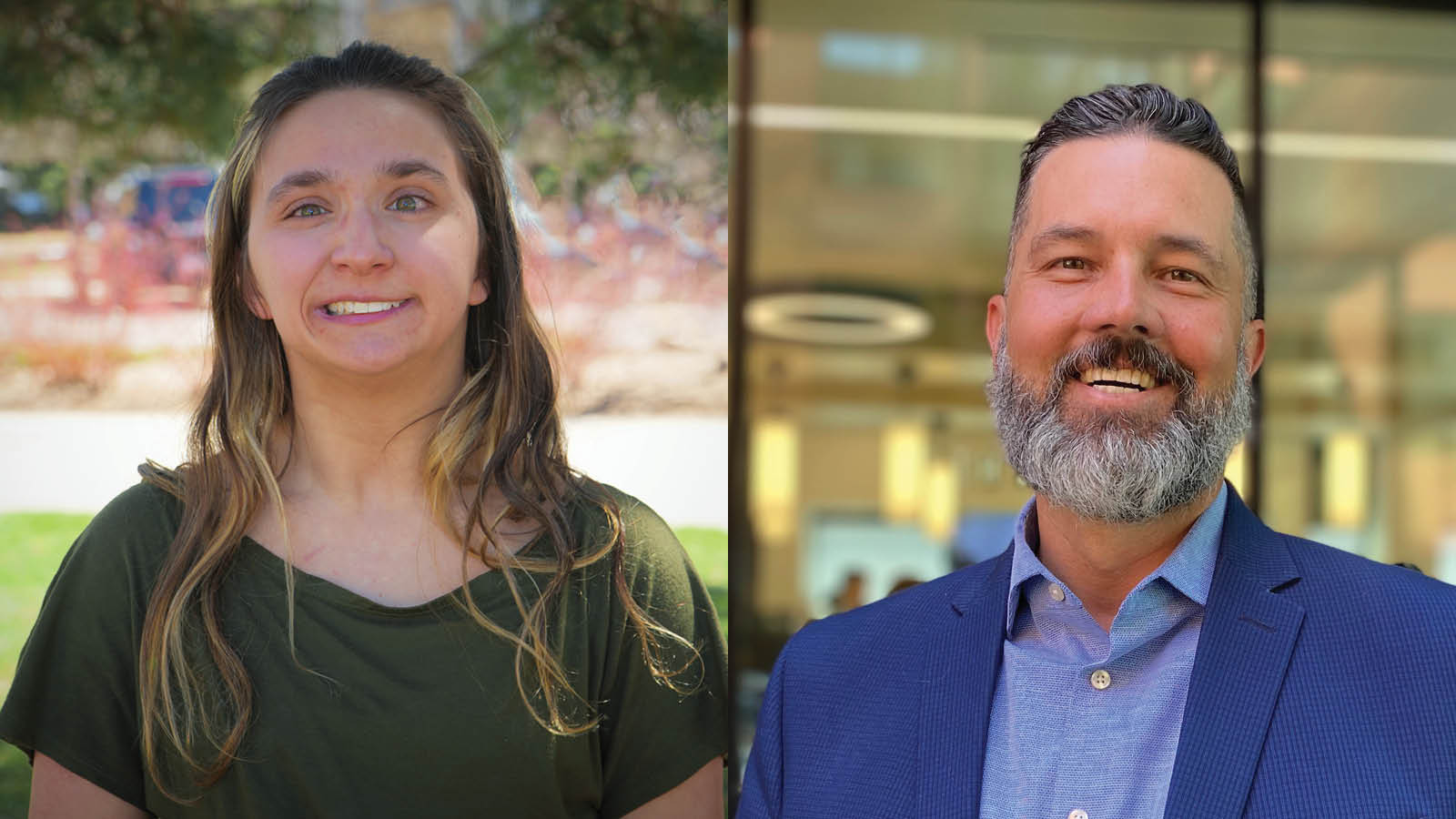New IDRPP Program Supports STEM Students With Disabilities

Autumn Cuellar and IDRPP Executive Director Matthew Wappett
A new-to-USU program offers mentorship and financial supports to students with disabilities in STEM (science, technology, engineering and math) fields. TAPDINTO-STEM is a national collaborative effort involving 29 colleges and universities all over the US.
For student mentor Autumn Cuellar, it’s an opportunity to give back. “I started at the University of Nevada-Reno, getting my bachelor’s and master’s in computer science. I always like helping people, however I can.” As a student with a disability, she had support working on her degrees, and she’s currently working on her PhD in engineering. “I just wanted to give what I received.”
National and local data suggest Cuellar succeeded against the odds (more on that below). The initiative began because students with disabilities are underrepresented in STEM fields, and it aims to support them both in their education and in transitioning from higher education to the workforce.
Students with Disabilities in STEM at USU
At Utah State University, TAPDINTO-STEM (The Alliance of Students with Disabilities for Inclusion, Networking, and Transition) is spearheaded by the Institute for Disability Research, Policy & Practice, with Executive Director Matthew Wappett as the project lead. Cuellar is the student mentor, advising two students who entered the program Winter semester. More students will be added in Fall 2023. The plan is to start small, putting a supportive structure in place.
Cuellar and Dr. Wappett have also worked to understand the educational environment at USU, as it stands now for students with disabilities in STEM fields. Like many universities around the country, Utah State has grown in both accessibility and awareness in the past few years, especially in the wake of COVID. The pandemic forced educators to figure out how to deliver courses remotely and to provide digital materials that were accessible. USU’s standards on digital and web accessibility—the captioning of online videos, for example—are more stringent now than they were pre-pandemic.
In addition, Wappett said, a lot of USU faculty members are doing disability-related work, including those in STEM fields.
Still, Wappett said, awareness is just a first step. He and Cuellar have spent months gathering data on students with disabilities who study STEM disciplines at USU. They discovered that while STEM fields included roughly 250 seniors with disabilities, only one-fifth of them graduated in 2022.
Some of that can be explained by how seniors are identified at USU, said David Pruden, who directs USU's Disability Resource Center. Seniors are categorized solely by the number of credits earned. But many USU students start their university careers after taking concurrent enrollment classes in high school, meaning they have earned a number of university credits but have not yet begun a degree program.
Wappett said he hopes to understand the graduation rate better as TAPDINTO-STEM continues. Other questions that arise from it are unanswered. How does it compare to the STEM student body as a whole? How does it compare to students with disabilities in STEM at other universities? Are students with disabilities taking longer to graduate, but getting there eventually? “It’s a phenomenon we can see, but we can’t explain it right now. … Are they quitting? We hope not.”
Wappett said another surprise was the number of students who self-identified as having a disability, but who did not connect themselves to the Disability Resource Center. Among the 45 students who applied to participate in TAPDINTO-STEM, half said they did not connect with the DRC.
“The research that’s out there indicates that around 20 percent of students have a disability,” said Pruden. But nationwide, only 5 to 10 percent of students register with their disability resource center.
DRCs around the country exist to address barriers to equal access in education, whether they are physical or in the design of a course. Some students may not feel they need their DRC, as college campuses become more physically accessible. Other students may want to try to navigate their academic career on their own. And some connect later, when they realize they could use some accommodations. “We are sometimes a little sad that we’re connecting a little later than we wish we had,” Pruden said.
TAPDINTO-STEM: Mountain Hub
USU falls under the Mountain regional hub of the initiative, led by Dr. Ronda Jenson at Northern Arizona University. “A big part of TAPDINTO-STEM is supporting students,” she said. The program links students to services they need, whether it’s mentoring, academic supports or the student food pantry. “Part of it is connecting [students to existing services] and part of it is filling in gaps.”
There’s also a lot of listening. “There’s a big part of the students telling us what they need us to know.” Often, Jenson hears from mentors with disabilities that their education experience was harder than it needed to be.
Looking back on her own experience, USU’s Cuellar said she was in touch with the UN-Reno’s disability resource center early on, and she practiced what she now preaches to her mentees at USU: “Be able to advocate for yourself and succeed with the skills you do have.”
Those messages were reinforced at the Some Assembly Required conference she recently attended in Kansas City with her mentees. “We learned how to tell our stories and we got to see assistive technology,” she said. “We talked about how to look for jobs and talk to some people in industry.”
Future plans
Plans are to grow the number of participants at USU by five to seven students in the Fall, and the project will continue to track and assess the needs of students with disabilities in the STEM disciplines.
Students interested in joining can contact Autumn Cuellar or Matthew Wappett.

